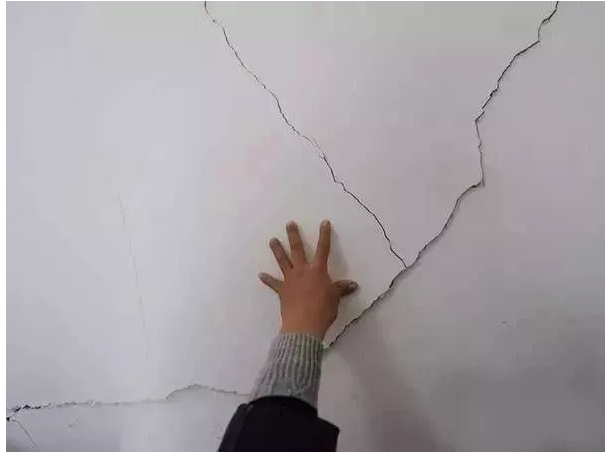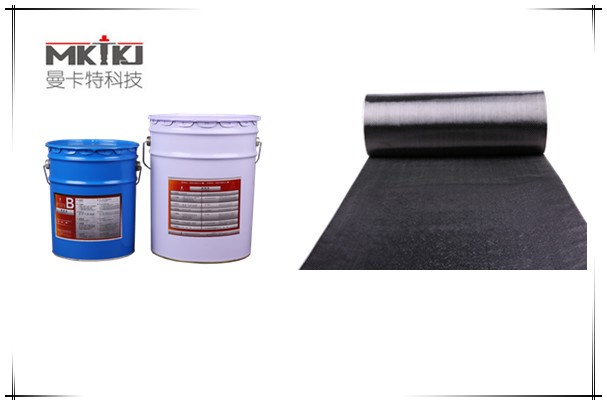As the building's use time increases, or the strength standard during construction is too low, some buildings gradually appear various cracks during use, which seriously affects the structural safety. Before strengthening and reinforcing these cracks, first it is necessary to clarify the causes and types of formation of these cracks. Only in this way can an effective reinforcement scheme be adopted in a targeted manner. What are the common cracks in concrete building structures?

1 What are the cracks in the brick wall?
01 “Eight” shaped cracks mainly appear at both ends of the horizontal wall and the vertical wall. One is a ground-based uneven settlement crack, and the other is a temperature-shrinking crack. The main reason for the formation of such cracks is that after the temperature rises, the temperature deformation of the roof panel is greater than that of the masonry, and a certain temperature stress is generated. The force of the roof panel is transmitted to the wall, so that the top wall is subjected to tensile and shear forces, tensile stress and the shear stress is large at both ends and small in the middle. When the tensile stress exceeds the tensile limit of the masonry, the eight-shaped cracks appear at the ends of the wall.
02 Inverted "eight" shaped cracks; When the two sides of the house settle large, the middle settlement is small, forming a reverse bending deformation, and oblique cracks appear on the vertical wall. Most of the cracks pass through the two opposite corners of the window, and the wall is inverted "eight" Glyph distribution.
03 Horizontal cracks; Horizontal cracks are mostly located at the top vertical and horizontal walls, the parapet wall and the gable. When the roof insulation is poor, the roof panel is thermally expanded, or when the house is partially unevenly settled, the wall of the middle lower cracking zone has its own weight, causing vertical tensile stress, causing horizontal cracks in the wall.
04 Vertical cracks; mainly appear at the window sill wall, at the end of the lintel and at the staggered floor. The reason for the crack is that when the temperature difference between the temperature and the ambient temperature is too large, the difference in deformation between the brick masonry and the concrete member is increased and mutually restrained, so that a large tensile stress is generated on the wall to make the wall cracking.
05 X-shaped cracks; most cracks along the masonry ash joints, mainly caused by the repeated action of thermal expansion and contraction of the house, while the X-shaped cracks generated by the bottom wall are caused by uneven or uneven settlement.
2.What are the cracks in the concrete column?
01 Axial compression; When the axial pressure exceeds the load carrying capacity of the column, vertical intermittent cracks appear on all four sides of the column.
02 Large eccentric compression; First, horizontal cracks appear on the side of the column away from the longitudinal force, and then several vertical intermittent cracks appear on the side of the column near the longitudinal force.
03 Small eccentric compression; A number of vertical intermittent cracks appear on the side of the column near the longitudinal force.
3.cracks in concrete beams
The force-induced cracks appear at the bottom of the beam. The crack is perpendicular to the beam, and the upper is wide and the lower is narrower. It is gradually inclined from the middle to the sides, and is caused by the positive bending moment; the force crack is generated at the top of the beam's support edge. The upper is wide and the below is narrow, which is caused by the negative bending moment of the support; the force crack appearing outside the edge of the bottom support of the beam is 45° oblique, which is caused by bending moment and shearing force. The non-stressed cracks of the beam generally occur on both sides of the beam. The cracks are linear, roughly equidistant and parallel to the stirrups. The cracks are wide upper and narrow below, mostly due to concrete shrinkage and temperature difference.
4.cracks in cast-in-place concrete slab
The deformation cracks of cast-in-place reinforced concrete beams are mostly penetrating cracks. The shape of the plate surface is almost the same as that of the bottom of the plate. The position of the plate surface and the bottom of the plate is similar but not completely consistent. The direction of the shrinkage crack of the cast-in-place reinforced concrete slab depends on the restraint and tensile strength, so the direction of the crack is generally perpendicular to the direction of the larger constraint and perpendicular to the direction of weaker tensile strength, both perpendicular to the long side and parallel to the short side.

Whether it is a crack in a wall or a crack in a beam or column, it should be highly valued by everyone. Once a crack is found, it is necessary to take effective measures to remedy it in the first time. It must not wait for an accident and then regret it. We recommend two very effective reinforcement materials - Mankate's filling glue and carbon fiber cloth combination. Mankate has specialized in the reinforcement industry for 16 years. It has successfully solved the cracks in concrete structures for many customers. If you need it, welcome. Feel free to ask Mankate~
Link to this article: https://www.njmkt.net/Article/hntjzjgzcj.html
(Editor: Nanjing Mankate, if you need to reprint, please indicate the source)